Azido groups in nitrogen heterocycles, if adjacent to annular nitrogen, can spontaneously cyclize to fused tetrazole or at least persist in azide-tetrazole equilibrium [1]. Azide-tetrazole valance tautomerism is considered as a reversible intramolecular 1,5-dipolar cycloaddition with azide tautomer being thermodynamically more stable. However, azide formation is endothermic process, thus azide...
Purine derivatives have been studied not only as biologically active compounds but also as scaffolds for OLED materials. Recently, purine based derivatives have shown promising results as TADF (thermally activated delayed fluorescence) materials [1].
In this study we have designed new purine-thiazolopyrimidine conjugates A and E containing phenylanthracene moiety, later to be studied as TADF...
Since 2002 when Meldal [1] and Sharpless [2] independently discovered a copper effect on azide-alkyne cycloaddition (Huisgen reaction), the copper(I) catalyzed azide-alkyne cycloaddition (CuAAC) reaction has gained a popularity and attention from scientists in various fields. CuAAC can be carried out in a variety of molecular solvents ranging from the nonpolar toluene and dichloromethane, to...
α – Amino acids are widely used in drug design and peptide chain synthesis. Proline is the only cyclic natural amino acid, therefore its conformational rigidity plays an important role in protein secondary structures, such as alpha helices.
Herein we report the synthesis of previously unreported bicyclic amino acid derivatives 4 substituted at bridgehead positions. These amino acids are even...
Highly luminescent two coordinate linear carbene-metal-amide (CMA, metal= Cu, Ag, Au) complexes with short radiative lifetimes have emerged as a highly promising direction towards TADF materials [1,2]. However, structural diversity of CMAs with potential OLED application is still limited to a handful of N-heterocyclic carbene (NHC) structures. In this report we demonstrate luminescent CMAs...
The abstract is in the attachment.
Malaria is a deadly parasitic infection caused by Plasmodium parasites. The widespread resistance against available antimalarial drugs motivates scientists to develop new therapeutic agents targeting the life cycle of the parasite by novel mechanisms of action.
Plasmepsins (plm) are malarial aspartic proteases which have been proposed as appropriate antimalarial drug targets. It is important...

